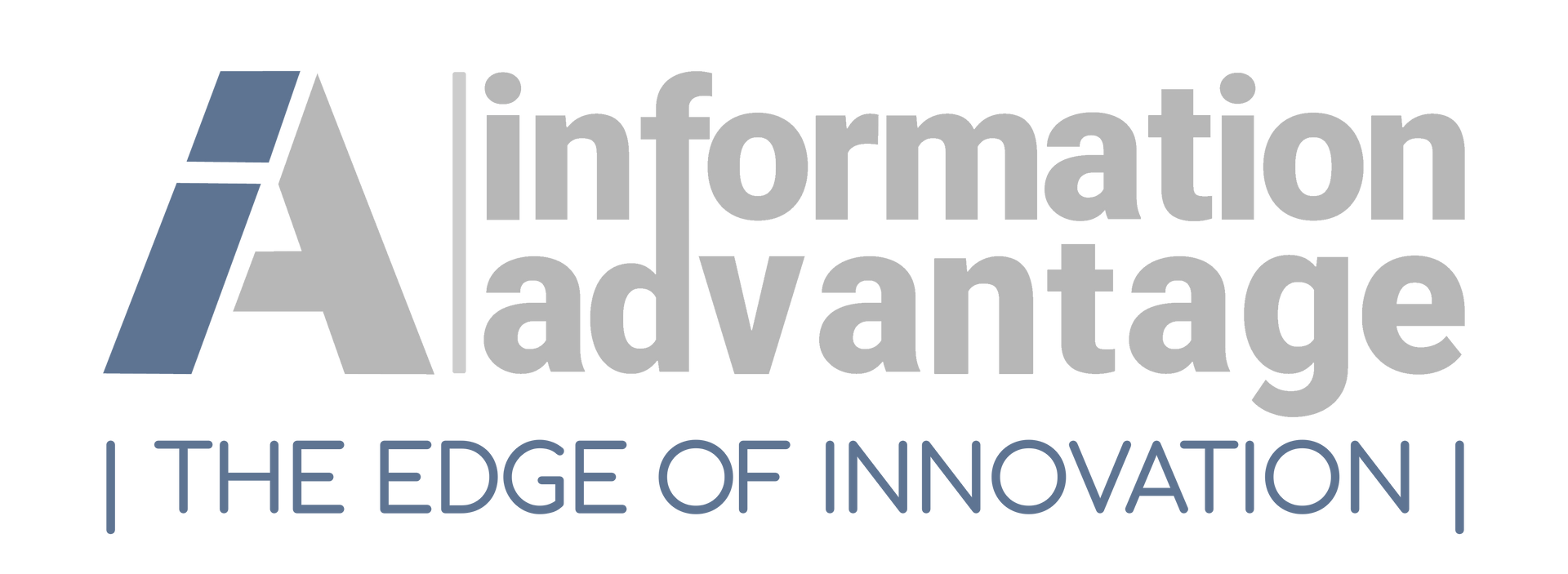Driving Behavior Change
The Two-Pillar Framework of Will and Capability
We communicate for one fundamental reason: change. Implementing a new business process, prepping the battlefield, or providing new services all require people to change behavior to some extent. Let’s face it—implementing real change is hard.
At Information Advantage, we view human behavior change through two essential pillars: Will and Capability. These pillars help us see not just what’s happening on the surface, but the underlying factors that drive or hinder change—especially when we frame behavior within the narrative contexts that shape people’s understanding of “truth.”
The Pillars
When we break it down, it feels intuitive that a desire to change and the ability to do so are essential for behavior change to occur. Leading an organization or team means we need to understand what fuels our audiences at the final point of decision—the moment when they buy our product, or not; implement a new business process, or not; receive help during a crisis, or not.
This Two-Pillar framework helps us diagnose obstacles and identify opportunities for change by examining eight drivers of change:
Will: Motivation and Reasons to Act
1 - Expected Outcome
This is an entity’s assumption about what is likely to happen. For example, you could adopt a new business operations process—or drag your feet and hope it goes away. If you think it won’t work, or that management will just pivot again next quarter, you might ignore it. Conversely, a potentially negative outcome could spur action (e.g., wanting a positive annual review might motivate you to implement the new process enthusiastically).
2 - Justification
More than just “a reason,” justification taps into moral, ethical, or normative motivations. You might mow your lawn because it’s a neighborhood expectation, even if personally you wouldn’t bother. Or you might refuse to mow if you believe it’s environmentally unsound, despite neighborhood norms. The strength of justification can override fear of consequences—or block willing adoption if it seems “wrong.”
3 - Interpersonal
As social creatures, we’re heavily influenced by our peers, leaders, and networks. This includes relationship norms, peer pressure, and communal support. If the team or community endorses a new policy or business tool, individuals are more likely to follow suit.
4 - Routinization
We are also creatures of habit. Routinization captures day-to-day rhythms and ingrained practices (like recurring meetings or the time we check email). A new initiative that collides with existing routines can face resistance. On the other hand, well-designed routines make tasks easier and can anchor rapid change, because people already have a reliable structure to lean on.
Capability: Having the Means to Carry Out Change
1 - Information
People must know what’s happening, why it matters, and how to act. For instance, an agency might set up a safe shelter during a hurricane. But if citizens don’t know it exists, they won’t use it.
2 - Expertise
This is the skill or competency required to perform a task effectively. Someone may fully understand the benefits of a new fitness regimen but lack the know-how to design one. In more complex scenarios—like learning a new software or procedure—people may need specialized training or guidance.
3 - Resources
Tangible or intangible assets that enable action—money, tools, raw materials, or staff. Without resources, even the most motivated team can’t succeed. Think of employees who need specific software licenses or updated equipment: without them, a process change stalls before it begins.
4 - Location
Where individuals or groups are situated—physically or virtually—can make or break an initiative. If a community is too remote, or if employees are isolated without secure internet access, no amount of good intention will allow them to fully participate or benefit.
Putting It All Together: Diagnosing Challenges & Crafting Solutions
Knowing these drivers allows us to look at our audiences in a simple yet direct way. We can quickly determine which drivers influence our audience, which we can affect, and where the greatest points of impact lie. We might need to shape our audience’s Expected Outcome or provide a critical Resource. Perhaps we only need to simplify a process into an easier routine. By using these drivers as a focusing lens, we can develop tailored interventions that address audience needs.
Scenario: Reluctance to Evacuate Coastal Community
Context: A severe hurricane is predicted to make landfall in a coastal region within 72 hours. In prior storms, residents of these small fishing villages have hesitated to evacuate, even though the government sets up official shelters further inland.
Major Obstacles
- Expected Outcome (Will): Many villagers don’t believe the storm will be as dangerous as officials predict. They recall previous hurricanes that didn’t hit as hard, so they remain skeptical.
- Routinization (Will): They’ve weathered mild storms at home for decades. Abandoning daily routines—tending boats, caring for livestock—feels more disruptive than the potential storm itself.
- Location (Capability): The inland shelters are several hours away. Travel might require leaving behind valuables, and some residents lack vehicles or easy transport.
Key Intervention with Significant Impact
Address Expected Outcome by Demonstrating Real Consequences
- Quick Win: Deploy local leaders (e.g., respected fishermen or community elders) with first-hand knowledge of previous disasters to speak at village gatherings. Show brief videos of damage from past severe storms in similar coastal towns.
- Impact: Hearing from trusted locals—coupled with tangible visuals—can shift skepticism toward recognizing the real danger, aligning the perceived outcome with official warnings.
Adjust Routines by Creating a “Community Evacuation Plan”
- Quick Win: Partner with local co-ops to arrange a secure holding area for boats and livestock closer to the evacuation route. Provide daily guidance (e.g., “Boat storage open from 6am-8pm”) to integrate evacuation steps into existing routines.
- Impact: This approach meets people halfway—offering a practical solution that disrupts their daily rhythm less. If they know their livelihood is protected, they’re more willing to leave.
Solve Location Obstacles Through Targeted Resources
- Quick Win: Organize government-sponsored buses or volunteer rides from a central pick-up point, with real-time updates on social media or local radio.
- Impact: Eliminating the transportation hurdle not only solves the physical distance issue but also shows villagers the government is genuinely committed to their well-being—building trust that will likely influence future crises.
In this scenario, focusing on just three drivers (Expected Outcome, Routinization, and Location) can unlock meaningful change. By providing compelling proof of danger, minimizing routine disruption, and making it physically easier to evacuate, the government can overcome the biggest barriers to keeping residents safe.
Scenario: Implementing a New Project Management Software
Context: A mid-size company decides to replace its patchwork of spreadsheets and email threads with a modern project management (PM) platform. Management expects greater collaboration and transparency, but the rollout meets surprising resistance.
Major Obstacles
Interpersonal (Will): Influential senior employees (team leads) are voicing doubts, causing others to follow suit. Their skepticism is contagious: “We’ve always just used Excel and email. Why fix what isn’t broken?”
Expertise (Capability): Few staff members have ever used advanced PM software. They fear wasting hours “figuring it out” with no guarantee of success.
Justification (Will): Some employees question the moral or normative “rightness” of top-down mandates. “Management didn’t consult us; they just forced a tool on us.”
Key Intervention with Significant Impact
Leverage Interpersonal Influence by Securing Team-Lead Buy-In
- Quick Win: Hold a separate, hands-on demo with these key influencers before the general rollout. Show them time-saving features and ask for feedback. Let them co-create best practices.
- Impact: When frontline leaders advocate for the tool, the rest of the team sees it as a peer-endorsed improvement, not just a management fad.
Boost Expertise Through Bite-Sized Training Sessions
- Quick Win: Schedule a series of short lunch-and-learn workshops or quick 20-minute “PM Tool 101” video tutorials for each department. Provide job aids (checklists, cheat sheets) to smooth the learning curve.
- Impact: Reducing the intimidation factor ensures employees gain the confidence and skills to use the software effectively. Expertise doesn’t feel unreachable if it’s taught in manageable chunks.
Reframe Justification by Emphasizing Shared Ownership
- Quick Win: Instead of framing this as a management “command,” present it as a collaborative evolution: “We’re refining how we track projects together—here’s how your input shapes the final workflow.”
- Impact: Employees who feel they have a say in decisions are more likely to see the initiative as “right and fair,” even if not everyone initially agrees with the changes.
In this scenario, tackling Interpersonal, Expertise, and Justification directly can quickly transform grumbling into cautious support—or even enthusiasm. By enlisting trusted team leads, offering easy, short-form training, and shifting the narrative to a shared project rather than a top-down edict, management can pave the way for a smoother rollout.
Target Key Drivers for Fast Impact
In each of these deeper scenarios, identifying a few pivotal drivers (rather than all eight at once) produces the biggest leverage. Whether it’s changing deeply ingrained routines in a coastal village or convincing skeptical employees to adopt a new tool, focusing on the right elements of Will and Capability can mean the difference between long-term success or ongoing resistance.
When faced with complex change:
- Pinpoint which Will factors (Expected Outcome, Justification, Interpersonal, Routinization) block or inspire people.
- Isolate the Capability hurdles (Information, Expertise, Resources, Location) that make or break real implementation.
- Concentrate on the most urgent or most impactful drivers for your unique context.
By doing so, you address the change barriers at their roots—and set the stage for meaningful, enduring transformation.
Ready to Drive Lasting Behavior Change?
Identify and address the precise barriers holding your organization back. Whether you're facing narrative obstacles, capability gaps, or resistance within your team, Information Advantage LLC helps you pinpoint the key drivers that truly move the needle. From strategic foresight and predictive analysis to tailored training and executive advisory, our solutions position your team to act decisively, communicate strategically, and achieve sustainable results.
Let's connect and start shaping your success today.
#IA
Written by Jack and co-edited by Steve and Information Advantage Assistant, a GPT trained by Steve. If you're wondering how to get AI included into your workflow flow from content creation all the way to strategic campaign management and forecasting, reach out!



